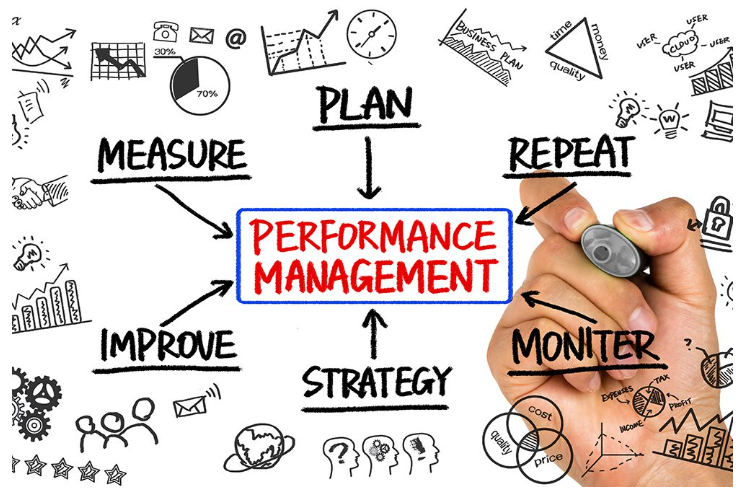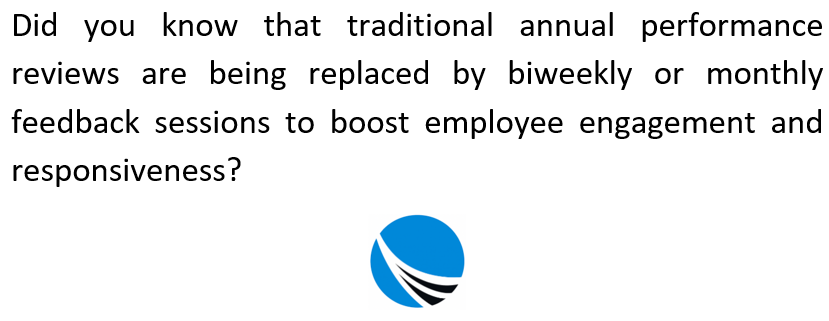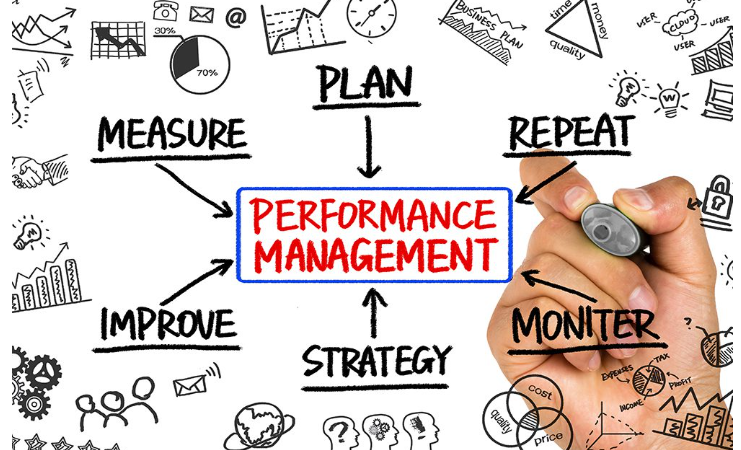For more than a century, performance management has been a cornerstone of organizational success. Originally introduced in the 1920s, it started as a formal evaluation method to monitor employee productivity. Over the decades, it evolved gradually, but the past decade has brought a rapid transformation that redefined how businesses approach employee performance.
Once rigid and backward-looking, performance reviews are now more fluid, collaborative, and future-focused. This new direction emphasizes frequent feedback, mutual goal-setting, and personal development—forming a model that fosters growth, motivation, and alignment across teams. Let’s explore how performance management has evolved, why this change matters, and what practices organizations can adopt to remain effective in today’s dynamic work environments.

Outdated Systems: Why Traditional Reviews Fall Short
The original performance management model was built around annual appraisals. These evaluations were primarily centered on historical achievements or mistakes and often left employees unaware of their standing throughout the year. Only during the formal review were they given a score or feedback, which came too late to correct issues or capitalize on strengths.
This approach suffered from several major flaws. Employees had little insight into whether their performance aligned with expectations. Organizations, in turn, missed the opportunity to adjust workflows or offer timely support. The review process was retrospective, lacking the capacity to influence future behavior or development.
As the workplace became more dynamic—driven by innovation, hybrid teams, and a faster pace of change—this annual format could no longer support the needs of either employees or leaders. Companies needed a more agile, responsive model to keep talent motivated and on track.

Embracing Agility in Performance Practices
Today’s workplaces require more adaptive strategies. Performance management now revolves around engagement, communication, and future planning. It’s no longer about ranking employees, but about enabling their progress.
This shift involves three foundational changes: continuous feedback loops, a stronger focus on developing individual capabilities, and shared ownership of goals between managers and employees. Each change not only updates outdated methods but also repositions performance management as a tool for growth rather than judgment.
Frequent Feedback: Replacing the Annual Review
In the past, performance discussions were often annual events that carried stress and little benefit. But modern organizations are turning this model on its head with consistent, bite-sized feedback sessions that create a culture of improvement rather than surprise.
Think of it like navigating with a GPS instead of a paper map. Rather than checking your progress only once at the end of a journey, you receive regular updates that help you course-correct as you go. Employees now meet with their managers more frequently—biweekly or monthly—to reflect on recent work, discuss progress, and align priorities.
These meetings are not formal interrogations. Instead, they are collaborative conversations where both parties bring observations, challenges, and ideas to the table. With this model, employees no longer wonder how they’re doing—they know. And if something isn’t going well, they have an immediate chance to fix it with the support of their leaders.
Developing People, Not Just Rating Them
Another major development is the move away from simply evaluating past behavior to actively investing in future potential. This concept, often called performance development, places emphasis on skill-building, career progression, and readiness for evolving roles.
Organizations now recognize that learning is not optional—it’s essential. Markets change fast, and employees need to adapt. To support this, many companies are integrating learning platforms, offering access to online courses, mentorship programs, and coaching.
Instead of telling employees what they did wrong, modern performance conversations aim to help them do better next time. They explore questions like: What skills do you need to grow into your next role? What challenges are you eager to take on? What support would help you thrive?
This approach doesn’t just improve individual performance—it boosts retention. Employees feel seen, valued, and empowered when they’re given the tools to grow. Companies, in turn, benefit from a more capable, agile workforce.
Setting Goals Together: Building Ownership and Engagement
In the old model, goals were often handed down from leadership with little input from the people expected to achieve them. Employees might not fully understand these objectives or feel invested in them. As a result, motivation and accountability suffered.
Today, effective goal-setting is a shared process. Employees and managers come together to define targets that align both with business priorities and individual aspirations. This mutual involvement fosters deeper engagement and a stronger sense of responsibility.
When someone helps craft their goals, they’re more likely to own them. They understand why these objectives matter and how their success contributes to broader team and company outcomes. This joint approach transforms performance management from a directive task into a motivational force.
Research consistently shows that workers who take part in setting their own goals are far more engaged than those who don’t. The reason is simple: autonomy and clarity drive action. Co-creation of goals provides both.
Aligning Performance with Purpose
Beyond individual performance, alignment with organizational strategy is crucial. Great employees can produce impressive results, but if their efforts don’t align with company goals, their work might not create the desired impact.
Performance alignment ensures that everyone—from entry-level team members to senior executives—is rowing in the same direction. It connects daily work to long-term business outcomes, allowing leaders to steer the organization more effectively.
This alignment goes hand-in-hand with performance management. While performance management focuses on how people work, alignment focuses on what they work on. Together, they create a powerful combination: capable people doing the right work in the right way.
Companies achieve this by clearly communicating strategic objectives, translating them into team and individual goals, and regularly checking that priorities haven’t drifted. This alignment transforms performance conversations from isolated events into meaningful discussions about progress and impact.
Leveraging Technology for Smarter Management
In today’s hybrid and remote work environments, technology plays a key role in making modern performance management possible. Without physical proximity, digital tools help managers stay connected, track progress, and offer support.
Video conferencing platforms like Zoom and Teams facilitate regular check-ins. Goal-tracking systems provide visibility into objectives and milestones. Learning management systems (LMS) offer structured development opportunities. Some companies even use platforms that collect real-time feedback or measure employee engagement.
Smart software can also help managers make more informed decisions. By using dashboards and analytics, leaders can spot trends, identify top performers, and recognize those who might need additional support. This data-driven approach helps eliminate bias and ensures fairer, more effective performance processes.
To get the most out of tech, organizations should map their performance management workflow and identify where digital tools can enhance each stage:
- During planning, tools help clarify expectations and set goals
- In review phases, they track progress and visualize performance metrics
- For development, they support learning and coaching efforts
- And in recognition, they automate rewards and feedback loops
Technology doesn’t replace human judgment—it strengthens it by adding consistency, transparency, and scale.

Cultivating a Culture of Growth
Ultimately, performance management is more than a set of practices—it’s a reflection of a company’s values. A modern performance culture emphasizes open communication, mutual respect, and continuous development.
Managers aren’t just evaluators anymore—they’re mentors, coaches, and facilitators. Their role is to help their team members succeed, not to judge them from a distance. This shift in mindset can have a profound impact on morale and productivity.
When employees know they’ll be supported, heard, and challenged to grow, they’re more likely to stay committed and perform at their best. Creating a culture where feedback is welcome and development is expected drives performance from the inside out.
Moving Forward: Redesigning the Experience
If your organization still relies on outdated appraisal systems, now is the time to rethink your approach. By adopting more agile, supportive, and inclusive methods, you’ll be better equipped to meet the demands of today’s workforce.
Start by assessing your current practices. How often do you provide feedback? Do employees understand their goals and how they were chosen? Are your managers prepared to coach, not just critique?
Invest in the tools and training necessary to support this transition. Create clear, structured development plans. Hold managers accountable for maintaining regular conversations. And most importantly, build a workplace where performance management is viewed as a partnership, not a punishment.
Conclusion
Performance management has transformed from a rigid, past-oriented process into a forward-looking, people-first strategy. The emphasis has shifted toward regular dialogue, collaborative goal-setting, and personal growth.
By fostering frequent check-ins, supporting development, and involving employees in defining their success, organizations can unlock greater engagement, improve outcomes, and build stronger teams.
In the modern workplace, the best performance systems aren’t just about measuring contribution—they’re about cultivating potential. Adapting to this new model isn’t just smart business—it’s essential for staying competitive and retaining talent in a rapidly changing world.

